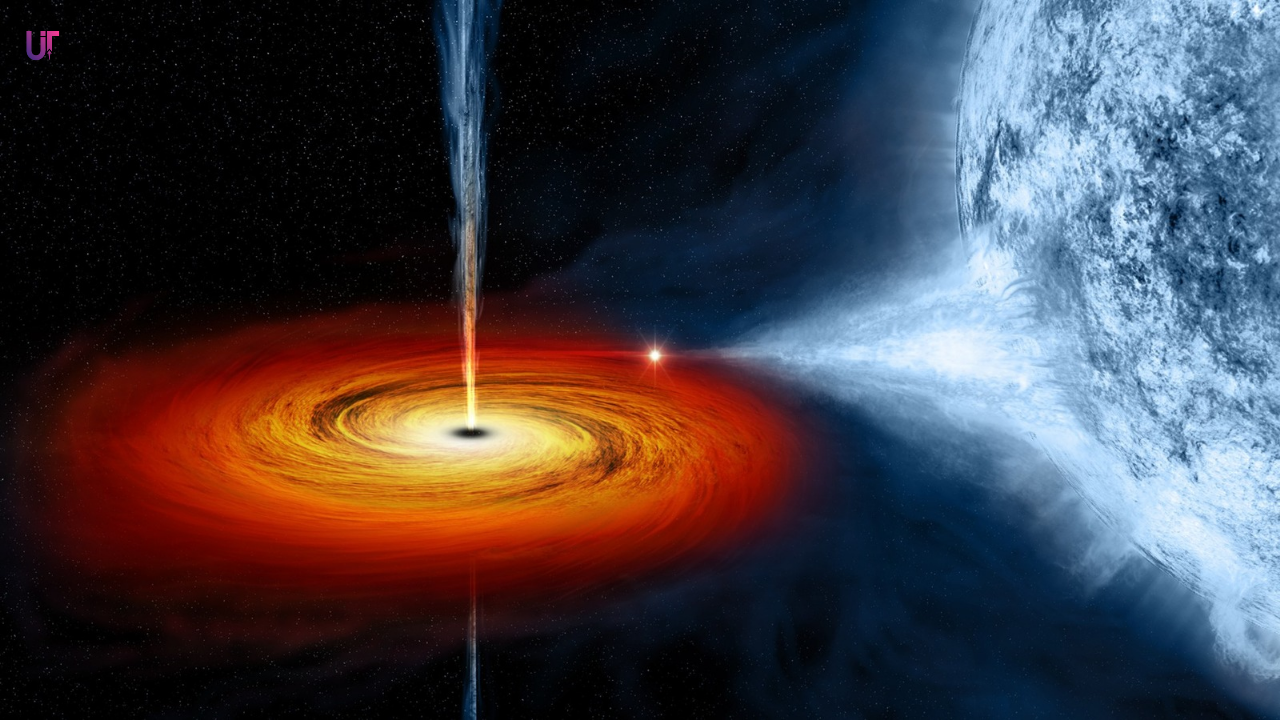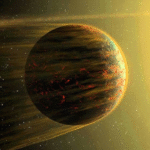Every star has a destiny written in its mass.
Some fade gently into white dwarfs.
Others collapse into black holes.
And between these two fates lies a cosmic boundary — the Chandrasekhar Limit.
It’s the line that decides whether a dying star can rest… or must fall forever.
What Is the Chandrasekhar Limit?
In simple terms:
The Chandrasekhar Limit is the maximum mass a white dwarf star can have before it collapses under its own gravity.
That limit is about 1.4 times the mass of our Sun.
If a white dwarf exceeds that, gravity wins — and no known force can hold it up.
The star then collapses further, becoming a neutron star or a black hole.
How It All Begins
When a star like our Sun runs out of fuel, it stops burning hydrogen in its core.
Without nuclear energy to fight gravity, the star begins to collapse inward.
But the collapse doesn’t go on forever — the electrons inside resist being squeezed together.
This invisible resistance is called electron degeneracy pressure (a rule born from quantum physics and the Pauli Exclusion Principle).
It’s like every electron saying:
“I won’t share my space with another electron.”
This pressure keeps the dying core stable — creating a white dwarf, a faint, dense ember of a star.
What the Limit Means
Now imagine adding more mass to that white dwarf.
More mass means more gravity, and more gravity means tighter squeezing.
At some point, not even electron degeneracy pressure can resist it.
That “breaking point” is the Chandrasekhar Limit — 1.4 solar masses.
Beyond this, the electrons get crushed into protons, forming neutrons.
The white dwarf collapses into a neutron star, or if it’s even heavier, a black hole.
A Simple Analogy
Think of it like stacking books on a balloon.
At first, the balloon holds — that’s the white dwarf supported by electron pressure.
But add too many books (too much mass), and the balloon gives way — the structure collapses.
That moment of failure is the Chandrasekhar Limit.
It’s nature’s way of saying: “Even resistance has its limits.”
The Physics Behind It (Simplified)
The limit arises from a balance between two competing forces:
| Force | What It Does | Source |
|---|---|---|
| Gravity | Pulls the star inward | Mass of the star |
| Degeneracy Pressure | Pushes outward, resisting collapse | Quantum mechanics of electrons |
When a star’s mass is small, these forces balance.
When it’s too heavy, gravity overwhelms quantum pressure — and the collapse becomes unstoppable.
That critical balance — that precise cosmic tipping point — is the Chandrasekhar Limit.
The Discovery
In 1930, a young Indian physicist named Subrahmanyan Chandrasekhar made this remarkable discovery at just 19 years old while traveling by ship to England.
Using Einstein’s relativity and quantum mechanics, he calculated the maximum mass a white dwarf could sustain — and shocked the scientific world.
Many dismissed him at first (even the great Eddington disagreed), but years later, his prediction proved true.
The Chandrasekhar Limit became a cornerstone of stellar evolution — and he eventually won the Nobel Prize in 1983 for it.
Why It Matters
The Chandrasekhar Limit explains why stars die differently:
- Stars like our Sun become white dwarfs.
- More massive stars become neutron stars or black holes.
It’s also the key to understanding Type Ia supernovae — stellar explosions that happen when a white dwarf in a binary system steals enough matter from a companion to cross the limit.
That explosion releases a brilliant flash visible across galaxies — and it all begins with crossing this invisible line.
Simple Definition
The Chandrasekhar Limit is the maximum mass (about 1.4 solar masses) that a white dwarf star can have before collapsing into a denser object like a neutron star or black hole.
It’s where quantum physics meets gravity — and where stability gives way to transformation.
In Short
| Concept | Meaning |
|---|---|
| Discovered by | Subrahmanyan Chandrasekhar (1930) |
| Value | ~1.4 times the mass of the Sun |
| Supported by | Electron degeneracy pressure |
| When exceeded | White dwarf collapses |
| Result | Neutron star or black hole |
| Real-world effect | Triggers Type Ia supernovae |
Final Thought
The Chandrasekhar Limit is more than a number — it’s a universal truth about endurance.
It tells us that even stars, as mighty as they are, have a breaking point.
And yet, in that breaking — in the collapse beyond stability —
the universe forges new wonders: neutron stars, black holes, and the elements that build life itself.
Even in death, stars create.
And all of it begins at the edge of the Chandrasekhar Limit.

